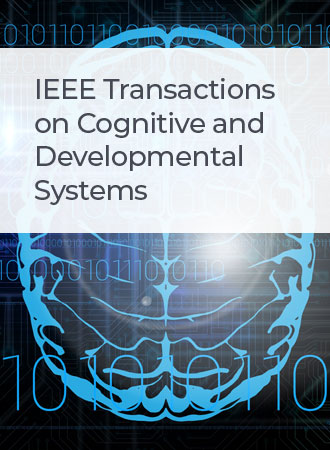利用多变量分解和集合学习从多通道脑电信号中识别跨主体情绪
IF 4.9
3区 计算机科学
Q1 COMPUTER SCIENCE, ARTIFICIAL INTELLIGENCE
IEEE Transactions on Cognitive and Developmental Systems
Pub Date : 2024-07-08
DOI:10.1109/TCDS.2024.3417534
引用次数: 0
摘要
情绪是一种精神状态,它决定了一个人在社会中的行为。在脑机接口(bci)、推荐系统(RSs)和认知神经科学等不同的应用中,一个人的情绪的自动识别至关重要。本文提出了一种基于多变量快速迭代滤波(MvFIF)和集成机器学习模型的自动方法来识别脑电图(EEG)信号中的跨主体情绪。利用MvFIF将多通道脑电信号分解成多通道内模函数(mimf)。从mimf中提取微分熵(DE)、色散熵(DispEn)、排列熵(PE)、谱熵(SE)和分布熵(DistEn)等特征。采用二元原子搜索优化(BASO)技术对特征空间进行降维。利用脑电信号的特征,采用光梯度增强机(LGBM)、极限学习机(ELM)和集成袋树(EBT)分类器来识别不同的人类情绪。结果表明,LGBM分类器使用来自GAMEEMO和做梦者数据库的多通道脑电信号进行跨主题情绪识别(ER),平均准确率分别达到99.50%和98.79%。与其他多元信号分解算法相比,基于mvfif的方法对多通道脑电信号的情绪识别具有更高的准确性。所提出的(MvFIF+DE+BASO+LGBM)技术优于现有的基于脑电信号的内线识别方法。本文章由计算机程序翻译,如有差异,请以英文原文为准。
Cross-Subject Emotion Recognition From Multichannel EEG Signals Using Multivariate Decomposition and Ensemble Learning
Emotions are mental states that determine the behavior of a person in society. Automated identification of a person's emotion is vital in different applications such as brain–computer interfaces (BCIs), recommender systems (RSs), and cognitive neuroscience. This article proposes an automated approach based on multivariate fast iterative filtering (MvFIF) and an ensemble machine learning model to recognize cross-subject emotions from electroencephalogram (EEG) signals. The multichannel EEG signals are initially decomposed into multichannel intrinsic mode functions (MIMFs) using the MvFIF. The features, such as differential entropy (DE), dispersion entropy (DispEn), permutation entropy (PE), spectral entropy (SE), and distribution entropy (DistEn), are extracted from MIMFs. The binary atom search optimization (BASO) technique is employed to reduce the dimension of the feature space. The light gradient boosting machine (LGBM), extreme learning machine (ELM), and ensemble bagged tree (EBT) classifiers are used to recognize different human emotions using the features of EEG signals. The results demonstrate that the LGBM classifier has achieved the highest average accuracy of 99.50% and 98.79%, respectively, using multichannel EEG signals from the GAMEEMO and DREAMER databases for cross-subject emotion recognition (ER). Compared to other multivariate signal decomposition algorithms, the MvFIF-based method has demonstrated higher accuracy in recognizing emotions using multichannel EEG signals. The proposed (MvFIF+DE+BASO+LGBM) technique outperforms the existing state-of-the-art methods in ER using EEG signals.
求助全文
通过发布文献求助,成功后即可免费获取论文全文。
去求助
来源期刊

IEEE Transactions on Cognitive and Developmental Systems
Computer Science-Software
CiteScore
7.20
自引率
10.00%
发文量
170
期刊介绍:
The IEEE Transactions on Cognitive and Developmental Systems (TCDS) focuses on advances in the study of development and cognition in natural (humans, animals) and artificial (robots, agents) systems. It welcomes contributions from multiple related disciplines including cognitive systems, cognitive robotics, developmental and epigenetic robotics, autonomous and evolutionary robotics, social structures, multi-agent and artificial life systems, computational neuroscience, and developmental psychology. Articles on theoretical, computational, application-oriented, and experimental studies as well as reviews in these areas are considered.
 求助内容:
求助内容: 应助结果提醒方式:
应助结果提醒方式:


